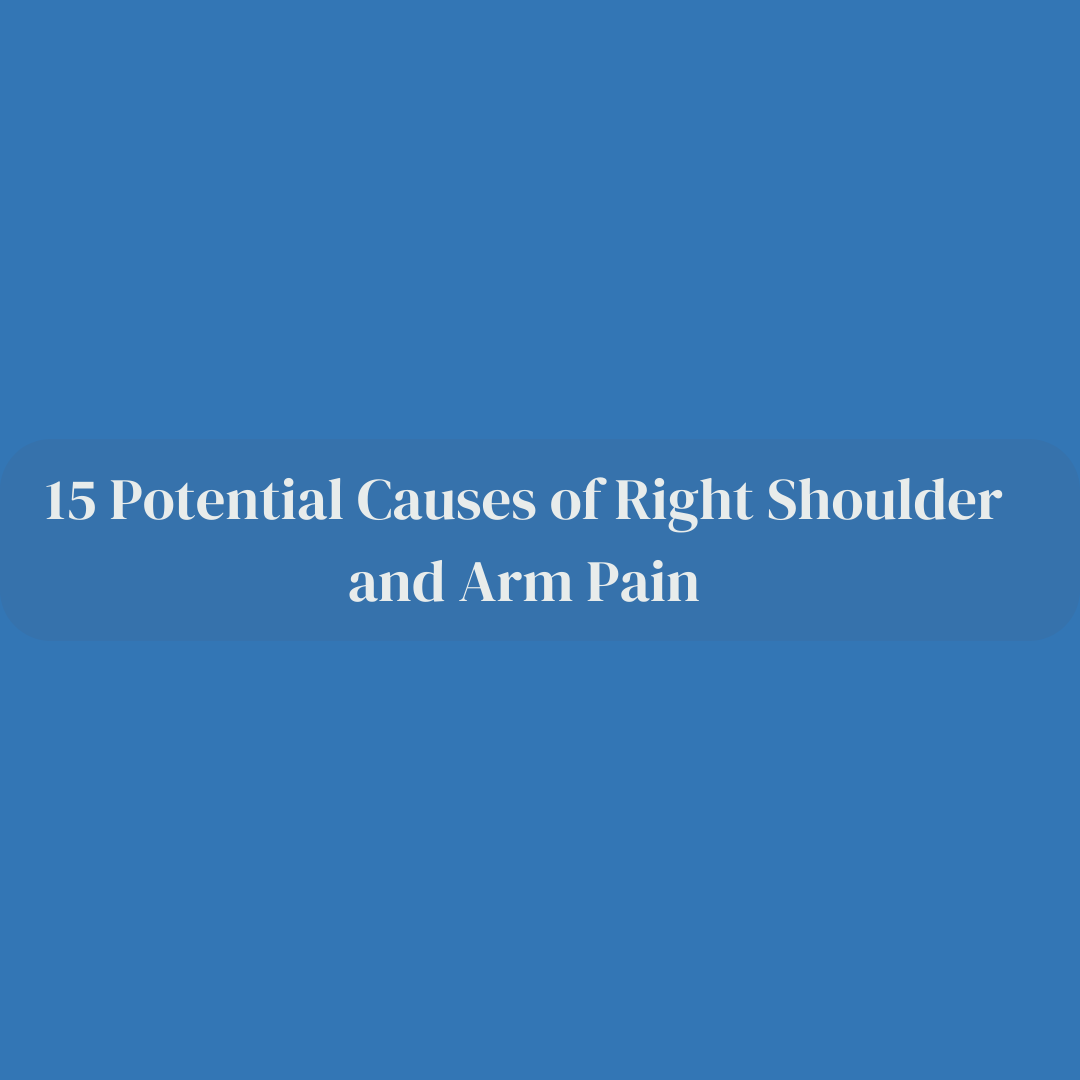The human body is a masterpiece of complexity, a harmonious symphony of bones, muscles, and nerves that work tirelessly to keep us moving and functioning. Yet, even the most finely tuned orchestra can experience occasional discord, and that’s where right shoulder and arm pain can make its entrance. This discomfort, which might start as a minor annoyance, can quickly escalate into a serious concern that demands our attention. In this article, we will embark on a journey to understand the intricate web of causes behind right shoulder and arm pain, exploring the factors that can contribute to this bewildering sensation.
1. Muscle Strain: The Unwanted Symphony of Overexertion
One of the most common causes of right shoulder and arm pain is muscle strain. This occurs when the muscles are pushed beyond their limits, often due to activities involving heavy lifting, repetitive movements, or sudden twisting motions. The result is pain and discomfort that can range from mild to severe.
2. Rotator Cuff Injuries: Threads of Stability Unravel
The rotator cuff is a group of muscles and tendons that keep the shoulder joint stable. Injuries to these delicate structures can lead to pain in the right shoulder and arm. Rotator cuff injuries can result from traumatic events or overuse, and they can cause not only pain but also restricted movement.
3. Frozen Shoulder: Mobility’s Chilling Halt
Frozen shoulder, also known as adhesive capsulitis, can be a frustrating and painful condition. It occurs when the tissues around the shoulder joint become inflamed and stiff, limiting the range of motion. People with frozen shoulder often experience pain that radiates down the arm.
4. Osteoarthritis: The Gradual Erosion of Comfort
Osteoarthritis, commonly referred to as wear-and-tear arthritis, can affect the shoulder joint and lead to pain. This condition involves the gradual breakdown of the protective cartilage in the joint, causing the bones to rub against each other. The result is pain, stiffness, and decreased mobility.
5. Tendinitis: Inflammation’s Unwanted Guest
Tendinitis, characterized by inflammation of the tendons, can impact the shoulder and arm. This condition is often caused by repetitive movements, such as those involved in sports or work-related activities. Tendinitis can cause localized pain and tenderness.
6. Bursitis: The Inflamed Discomfort
Bursitis occurs when the bursae, small sacs filled with fluid that cushion the joints, become inflamed. In the case of the shoulder, subacromial bursitis is a common condition that leads to pain when lifting the arm or performing overhead activities.
7. Fractured Bone: A Sudden Disruption
A fracture or break in the bones of the shoulder or arm can result in intense pain. Fractures can occur due to accidents, falls, or other traumatic events. The pain is often immediate and may be accompanied by swelling and bruising.
8. Nerve Compression: Signals Lost in Transmission
Nerve compression, often caused by conditions like thoracic outlet syndrome, can lead to pain, tingling, and numbness in the right shoulder and arm. Pressure on the nerves can disrupt the normal signals being sent to and from the brain, causing discomfort.
9. Heart Conditions: The Surprising Link
Believe it or not, heart conditions can sometimes manifest as right shoulder and arm pain. In some cases, conditions like angina or heart attack can cause referred pain that is felt in these areas. It’s essential to rule out heart-related issues when experiencing this type of pain.
10. Gallbladder Issues: The Unexpected Culprit
Gallbladder problems, such as gallstones or inflammation, can cause pain that radiates to the right shoulder and arm. This is known as referred pain and occurs because the nerves that serve these areas share pathways with the gallbladder.
11. Lung Problems: A Breathless Connection
Certain lung conditions, including pleurisy or pneumonia, can lead to pain that is felt in the right shoulder and arm. The close proximity of the lungs to these areas can result in referred pain that can be both confusing and concerning.
12. Digestive Disorders: Unforeseen Consequences
Digestive issues, such as acid reflux or gastritis, can lead to referred pain in the right shoulder and arm. This occurs due to the shared nerve pathways between the digestive system and these areas.
13. Shingles: The Viral Intrusion
Shingles, a viral infection caused by the varicella-zoster virus, can lead to pain that radiates along the nerve pathways. If the virus affects the nerves serving the right shoulder and arm, it can result in sharp, shooting pain.
14. Stress and Tension: Mind and Body Connection
Stress and tension can manifest physically, leading to muscle tightness and discomfort. Many individuals hold tension in their shoulders, which can result in right shoulder and arm pain.
15. Referred Pain: The Web of Connections
Referred pain occurs when pain originating from one area is felt in another part of the body. This phenomenon can lead to confusion in identifying the true source of pain.
In the midst of this intricate puzzle of pain, seeking professional medical evaluation is crucial. Only a qualified healthcare provider can accurately diagnose the underlying cause of right shoulder and arm pain and recommend appropriate treatment options. From physiotherapy to medications, each individual’s journey to relief may vary, but the common thread is the importance of addressing the issue head-on.
In conclusion, the complexities of the human body are both astounding and puzzling. Right shoulder and arm pain can be caused by a myriad of factors, each requiring careful consideration and evaluation. By being proactive in seeking medical guidance and exploring appropriate treatments, individuals can navigate their way to a life free from the burden of pain. Remember, the journey to relief begins with a single step toward understanding and healing.
